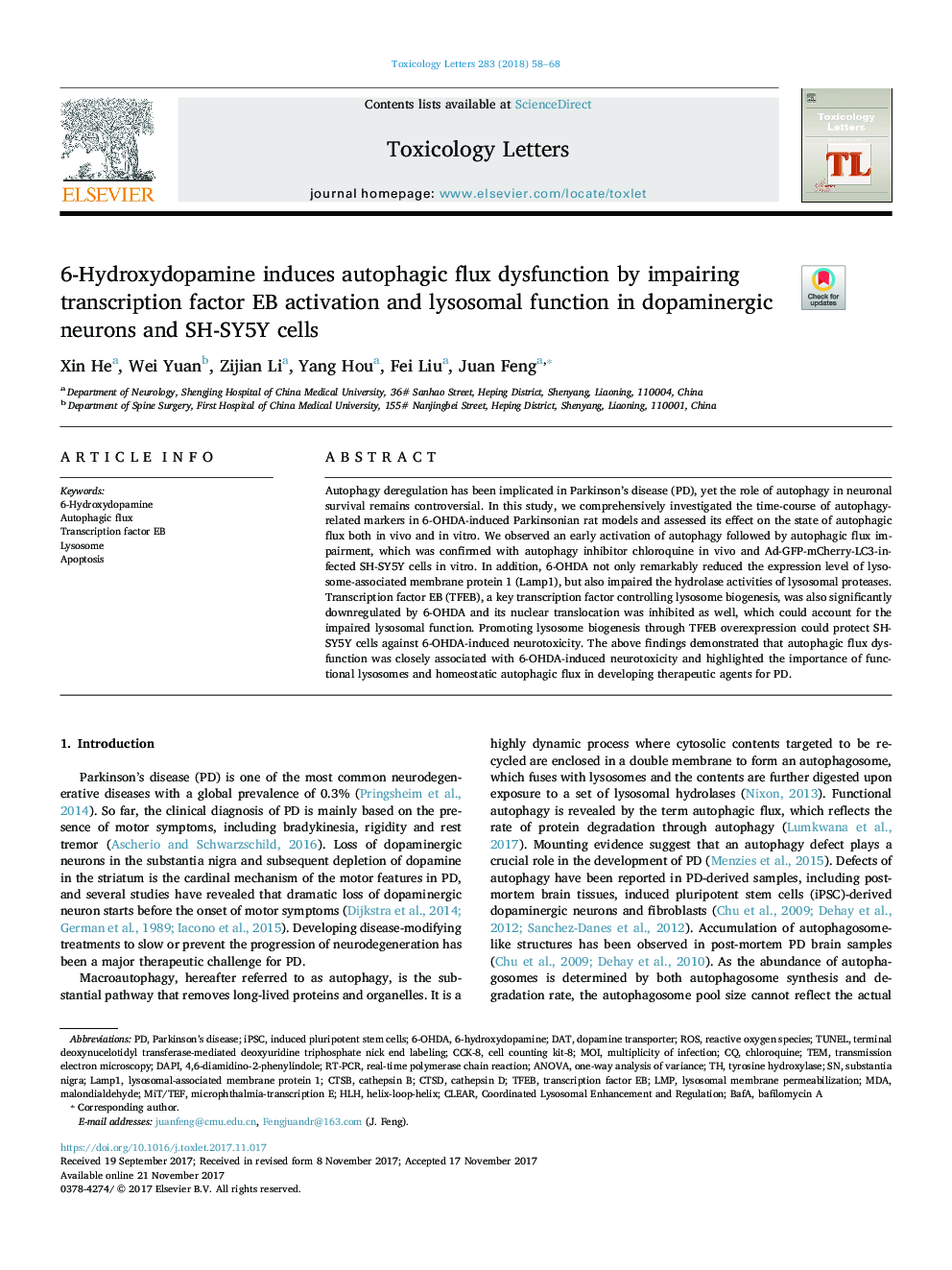| Article ID | Journal | Published Year | Pages | File Type |
|---|---|---|---|---|
| 8553510 | Toxicology Letters | 2018 | 11 Pages |
Abstract
Autophagy deregulation has been implicated in Parkinson's disease (PD), yet the role of autophagy in neuronal survival remains controversial. In this study, we comprehensively investigated the time-course of autophagy-related markers in 6-OHDA-induced Parkinsonian rat models and assessed its effect on the state of autophagic flux both in vivo and in vitro. We observed an early activation of autophagy followed by autophagic flux impairment, which was confirmed with autophagy inhibitor chloroquine in vivo and Ad-GFP-mCherry-LC3-infected SH-SY5Y cells in vitro. In addition, 6-OHDA not only remarkably reduced the expression level of lysosome-associated membrane protein 1 (Lamp1), but also impaired the hydrolase activities of lysosomal proteases. Transcription factor EB (TFEB), a key transcription factor controlling lysosome biogenesis, was also significantly downregulated by 6-OHDA and its nuclear translocation was inhibited as well, which could account for the impaired lysosomal function. Promoting lysosome biogenesis through TFEB overexpression could protect SH-SY5Y cells against 6-OHDA-induced neurotoxicity. The above findings demonstrated that autophagic flux dysfunction was closely associated with 6-OHDA-induced neurotoxicity and highlighted the importance of functional lysosomes and homeostatic autophagic flux in developing therapeutic agents for PD.
Keywords
CtsBDAPICTSDDATRT-PCRLMPHLH6-HydroxydopamineIPSCLAMP1TFEBbafilomycin A6-OHDACCK-8MDABAFA4,6-diamidino-2-phenylindoleMOILysosomal membrane permeabilizationROSDopamine transporterTemParkinson’s diseaseANOVAone-way analysis of variancesubstantia nigraTUNELtyrosine hydroxylaseApoptosisInduced pluripotent stem cellshelix-loop-helixAutophagic fluxcell counting kit-8Transcription factor EBLysosomemalondialdehydeTransmission electron microscopyreal-time polymerase chain reactionClearLysosomal-associated membrane protein 1multiplicity of infectionCathepsin Bcathepsin DChloroquineReactive oxygen species
Related Topics
Life Sciences
Environmental Science
Health, Toxicology and Mutagenesis
Authors
Xin He, Wei Yuan, Zijian Li, Yang Hou, Fei Liu, Juan Feng,
